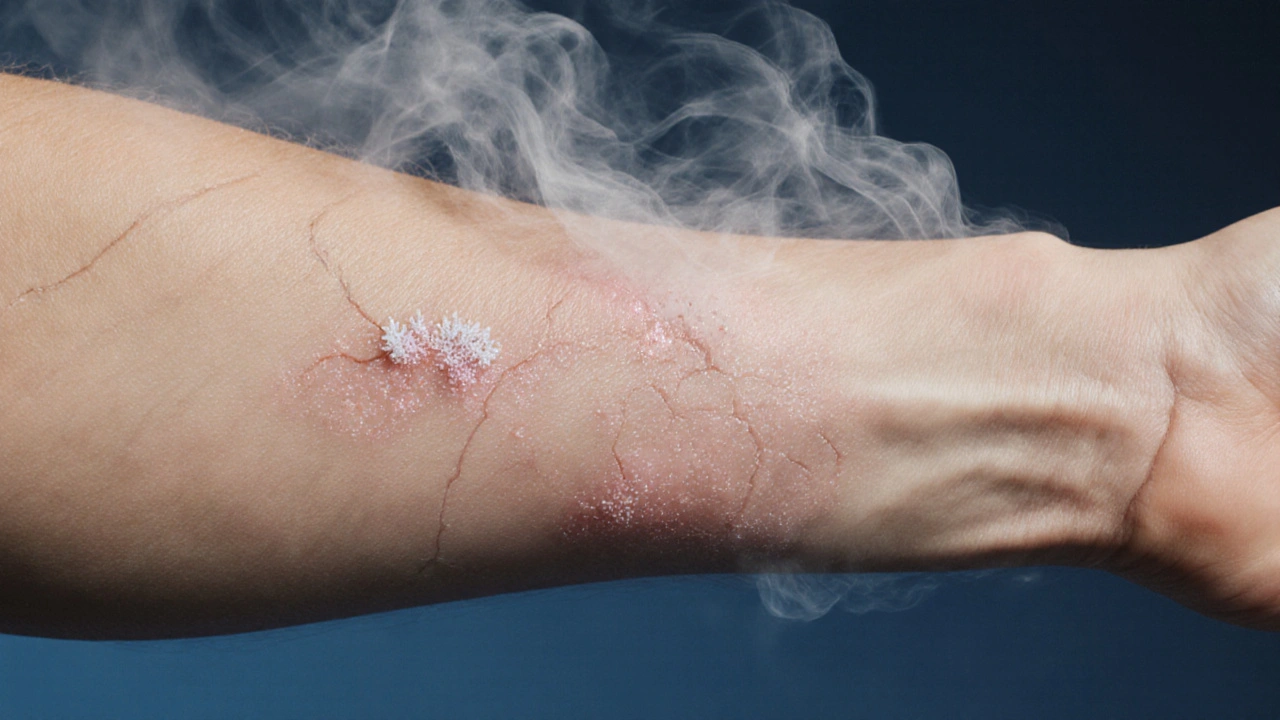Skin Yeast Infection – What It Is and How to Treat It
When dealing with Skin Yeast Infection, a fungal overgrowth that appears as red, itchy patches on the body. Also known as cutaneous candidiasis, it often involves Candida, the yeast species most frequently behind the problem. Effective care usually requires antifungal medication, drugs that stop yeast from multiplying, which can be applied as a topical cream, a lotion or ointment used directly on the skin or taken as a systemic therapy, an oral pill that works from inside the body. The infection thrives in warm, moist areas and spreads when the skin barrier is compromised.
Why does Candida overgrow? The main answer lies in the balance of the skin’s natural microbiome. When you use broad‑spectrum antibiotics, they can wipe out helpful bacteria, giving yeast a chance to multiply. Diabetes, obesity, and a weakened immune system also tilt the scales toward infection. Even simple habits like wearing tight, non‑breathable clothes or staying in sweaty gym gear for hours can create the perfect breeding ground. Recognizing these risk factors helps you prevent flare‑ups before they start.
Symptoms are usually easy to spot: bright red patches, sometimes with a slightly raised border, that itch or burn. In moist folds—under the breasts, in the groin, or between toes—you might see a soggy, macerated look. If you notice white, cottage‑cheese‑like discharge, that often points to a yeast infection rather than a bacterial one. Early treatment stops the rash from spreading and reduces discomfort.
Choosing the Right Treatment
Topical antifungal creams like clotrimazole or miconazole are the first line for mild cases. Apply a thin layer twice daily for a week, even if the rash improves sooner, to ensure the yeast is fully eradicated. For larger or recurring areas, a prescription‑strength cream or a short course of oral medication such as fluconazole or itraconazole may be needed. Oral pills work faster for deep‑seated infections, but they require a doctor’s approval and monitoring for side effects.
Don’t forget supportive care. Keep the affected area clean and dry; after showering, gently pat the skin with a towel—don’t rub. Use powder or moisture‑wicking fabrics to reduce humidity. If you’re prone to infections, consider a daily probiotic or a skin‑friendly cleanser that maintains the natural bacterial balance. These small habits cut down the odds of the yeast bouncing back.
When you combine proper hygiene with the right antifungal strategy, most skin yeast infections clear up within a couple of weeks. If the rash persists, spreads rapidly, or comes with fever, it’s time to see a healthcare professional—there could be an underlying condition needing attention.
Below you’ll find a curated list of articles that dive deeper into each of these topics. From detailed medication guides to lifestyle tweaks, the posts will give you the practical steps you need to manage and prevent skin yeast infection effectively.
How Smoking Increases the Risk of Skin Yeast Infections

Explore how smoking weakens immunity and skin barriers, raising the risk of cutaneous yeast infections, and learn prevention, treatment, and quitting tips.
- October 10 2025
- Tony Newman
- 9 Comments
